Artists:
Freddie Hubbard (trumpet) Tina Brooks (tenor saxophone) Duke Jordan (piano) Sam Jones (bass) Art Taylor (drums) recorded Rudy Van Gelder Studio, Englewood Cliffs, NJ, June 25, 1960
Holy Grail status: Another one that isn’t going to happen any time soon. A couple of thousand dollars short of Mobley 1568, but eye-watering just the same.
The Quest: affordable alternatives that offer near-original quality.
So we go fishing in the alternatives, and see how they measure up. No original this time, unaffordable, or Music Matters I’m afraid, how many different editions does a collector need? If you find a website that buys dozens of different pressings just for the sake of comparing them all, tell me about it, before calling the men in white coats. What LJC is doing is happenstance, from my own collection, “triangulation”, a bit at a time, comparing this with that, then that with something else, hoping to build up over time a body of knowledge, in the search for the affordable good stuff, and may be learn some lessons along the way.
Contestant number 1: Toshiba-EMI RVG remaster (1998)
Selection: Good Old Soul (RVG digital re-master)
Music:
Must have Tina Brooks as leader, one of only a handful of titles. Find him as sideman on Jimmy Smith’s The Sermon, House Party and Cool Blues; other titles with Kenny Burrell, Freddie Redd, Freddie Hubbard, and Jackie McLean.
Brook’s tenor voice is youthful and wayward: satisfyingly unpredictable, sensitive, bluesy runs which don’t stop when and where you expect, accelerando & retardo like a learner driver alternating between accelerator and brake, decorative figures roll off anthemic headline statements, speed deployed for effect stopping for the odd quotation from a popular tune, and off again in an unexpected direction, all the time his tone a poignant timbre and an unstoppable flow of ideas. Who knows what Tina Brooks might have become, if not a victim of heroin dependency, succumbing to liver failure aged just 42. Drugs not cool.
Vinyl: Toshiba EMI TOJJ-6516 Stereo 185 gram vinyl
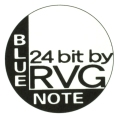 “Limited 2004 Japanese 180gram Vinyl released as part of Toshiba EMIs Blue Note 65th Anniversary series remastered by Rudy Van Gelder using the best available master tapes with the lacquers cut by legendary 小鉄徹 (Toru Kotetsu), mastering engineer for the JVC Mastering Center at Victor JVC in Japan.. The silk laminated sleeve replicates the albums original artwork”
“Limited 2004 Japanese 180gram Vinyl released as part of Toshiba EMIs Blue Note 65th Anniversary series remastered by Rudy Van Gelder using the best available master tapes with the lacquers cut by legendary 小鉄徹 (Toru Kotetsu), mastering engineer for the JVC Mastering Center at Victor JVC in Japan.. The silk laminated sleeve replicates the albums original artwork”
There are not just “Japanese pressings”, all the same. It’s a rich seam of vinyl production over several decades, but here trying to come to terms with the digital format, primarily the Evil Silver Disk, as a new generation confuse portability and convenience with quality. It’s modern it’s new, it’s progress, it must be better. Really? Putting it back on vinyl however, I applaud the effort. TokyoJazzCollector’s verdict, who knows, raise you another thousand.
Contestant Number 2: Mosaic Records, Michel Cuscuna’s 80’s/90’s brainchild four LP set
Vinyl: Mosaic MR4-106 : Tina Brooks Quintet Complete Blue Note box set -1990s, OOP. Number 3276 of limited edition 7,500 pressing run, engineered by EMI’s Ron McMaster from original tapes owned by EMI; 113 gram vinyl
Selection: Good Old Soul
EMI’s Ron McMaster signature in the runout. Can McMaster outshine his mentor the revered Rudy Van Gelder? Or is it really an unequal contest, analog versus digital?
Which is your preference – the Van Gelder 24-bit Toshiba Digital Vinyl, or the Mosaic “natural analog”? Both cost around the same on a single LP comparison, and each is about one twentieth of the cost of the original Blue Note (which I don’t have)
Post Match Analysis
Rising to the challenge of some LJC commentators, I sought out another triangulation of vinyl quality between low-cost options as an alternative to unaffordable originals.
This Toshiba is not like any other I own ( around fifty, if you want to know. ) It is the only one to claim contemporary remastering by Van Gelder personally. I assume he sat at a digital desk and turned his own 1960 analog tape into 24-bit digital master, from which JVC wizard Toru Kotetsu cut an acetate laquer which they turned it back into an LP. I assumed, wrongly, that must be a good thing.
What happens to a piece of music when you take it from an analogue tape to a digital format, pimping it as the digital format encourages, and turn it back into an analog medium? Well, in my opinion, it is what happens after freezing and microwaving food – somewhere along the way, the flavour gets lost, and what appears is strident over-produced, musical botox. Music with a trout-pout.
I have had the Toshiba for several years and every time I took it out and played it, it was dead, wooden, lacking the sparkle I had grown to expect from the best Blue Note from Japan. It weighs over 180 gram – so what? I switched off, which is a great shame. The Mosaic re-awakened my taste buds. The recent tonearm cable upgrade finished the job. This is music I can listen to over and over, it is magnificent.
“Digital” is widely accepted by people as The Future, but far from being progressive, it is regressive. Who knew? 24-bit master? They say 32 bit is the way to go. Analogue is infinitely resolvable: there is always more detail in the groove, if you can get it out.
Collectors Corner
Vinyl is apparently cool, making a comeback. Recently in one of my favourite record stores I head the words ” Oh my God” “Cool” and “like” in every sentence, sometimes, several times, from uber-cool young urbanites, mostly referring to records by artists they last saw at “Glasto”. Yet when I showed my daughter my LJC website and explained “I photograph records” she collapsed in a fit of giggles. Oblivious to any contradiction, last year she bought her husband his first turntable. Oh my god, like, cool.

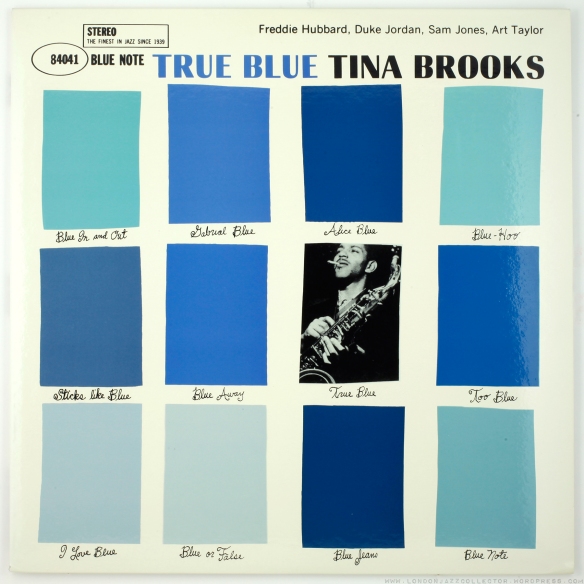
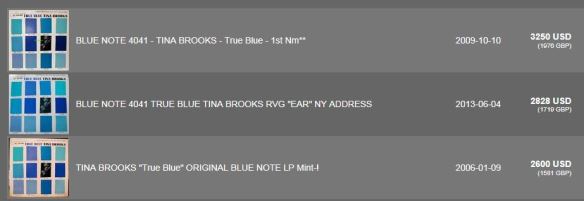
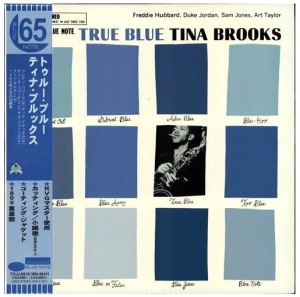
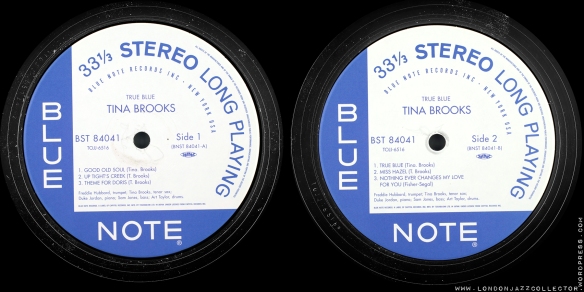
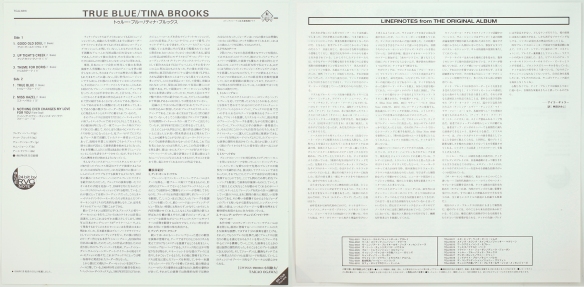
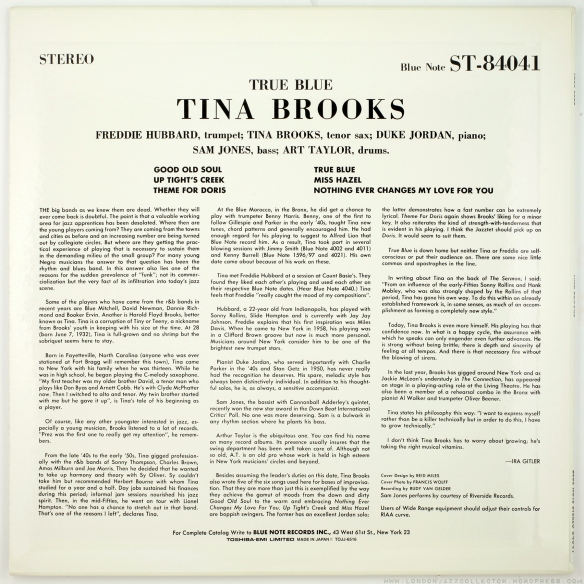
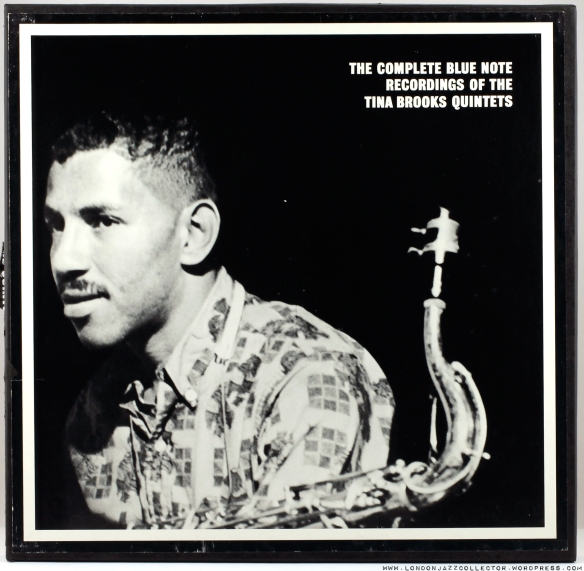
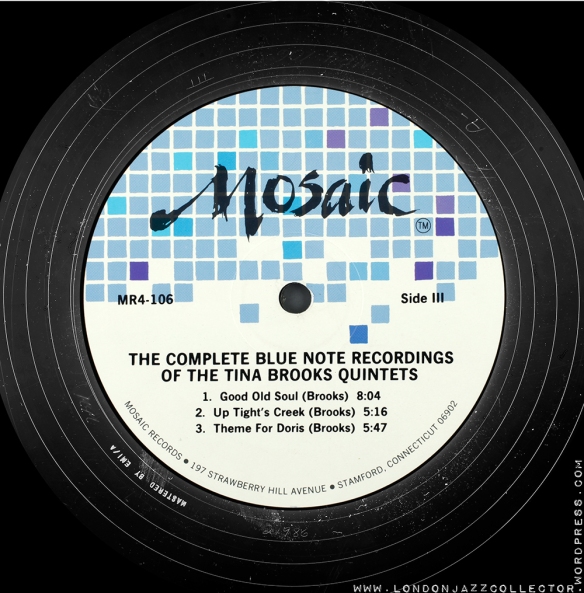
Just wondering how the Mosaic would compare to an earlier King pressing?
Anyone able to offer an opinion or shed some light on the two?
Thanks
LikeLike
I have the mosaic box set and was not that appreciative of it knowing there was better. Plus a box set I have to dig out that has no great artwork to admire. Then I have a 1981 King arrive, first stereo pressing apparently!? It was good but upon re-appraising the mosaic I find the mosaic a better experience to these ears. Why? More air around the instruments a greater sense of being there closer to the musicians. It’s a warmer sound in all but I am talking subtleties. All a product of the King no doubt being off of a copy tape and the mosaic from the original tapes?There is no BIG difference. There is better but as LJC says not arriving any day soon. I’d be happy to find a classic records. I have a few of these and of all the various editions I find these closer to the real thing but with better bass; less roll-off.
LikeLike
LJC, you may find the BN xrcds released by the AudioWave interesting. As I’m writing this I’m comparing the Mosaic Brooks to the xrcd of the True Blue, and I must admit that xrcd is is much better in every aspect, perhaps save for the lower end. Mosaic sounds subdued and muffled in comparison. Wish I had the original to compare it to…
LikeLike
We all wish we had an original True Blue for comparison! There is a reason…
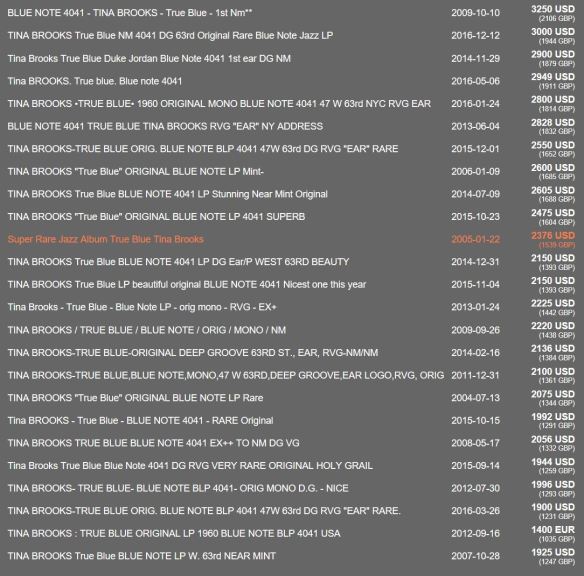
Mosaic are frustratingly variable in audio quality, it was all about knowledge and curating. I don’t think anyone there understood much about vinyl engineering, it was just farmed out through usual channels.
LikeLike
I have nine Mosaic boxed sets, albeit CD, and they are all consistently excellent. So it must indeed be the vinyl engineering that occasionally went wrong.
LikeLike
What abou the Japanese release from 1981(GXK8202)?
LikeLike
Somewhere I read of a jazz collector that had every different pressing of a certain record (if recall right, it was Kind of Blue) so that he could find “the best”.It certainly wasn’t me.
Mostly, we “triangulate” – we try to draw conclusions from a small number of different samples – because this, and because that, then probably something. It’s better than nothing, but we don’t know how much better.
(Deep breath) I have fifty five LPs issued by King, many where I have another different issue, either original, or Toshiba, or other. I know what I expect to hear, but even then, King span the range from excellent to weak. I have heard enough BN originals to know they don’t match up to those. So you ask the most difficult of all questions, which reissue sounds best.
As I don’t have a copy of the one in question, the straight answer is I don’t know. But if I were to triangulate, I would expect the King to sound better than the horrid Toshiba digital transfer, but neither as good as the Mosaic, and none as good as an original.
Of course I could be completely wrong.
LikeLike
I have the Mono 200 gram classic records reissue. Shall i say it? I’m completely satisfied with it unless i find an original in a thrift store because that’s the only way I’ll ever own one. Can The new Music Matters 33.3 reissue compete or surpass the classic records? Clearly the 200 gram outperforms the 180 gram on the classic records.
LikeLike
Just to note that there is a 1989 Toshiba EMI reissue which I’m pretty sure won’t be digital in any way.
Sounds lovely to these ears
LikeLike
I gave a slight nod to the Mosaic LP. Though from what I understand Ron McMaster’s cutting chain converts to digital when the lacquer is being cut. I used to own the Mosaic box set, I seem to recall there was some terrible distortion on “Star Eyes”
I sold it after getting the two Music Matters records.
LikeLike
Don’t forget the 1994 Blue Note Connoisseur reissue pressed on 180g vinyl and sourced (allegedly) from analog tapes. I haven’t A/B’d them lately but I recall it being at least as good as the Mosaic box. I’ll have to pull both out this evening and have a listen.
Also, while its easy to lump the 80’s and 90’s BN pressings into a singular pile of coal I have to say that the Top Ten and Connoisseur vinyl are, for the most part, excellent. The Top Ten series were analog sourced and believe the vast majority of the Connoisseur’s were also analog sourced. Both series were pressed on 180g. To top it off, the Top Ten’s were pressed in both the US and UK!
The Connoisseur series released many interesting titles including sessions originally pulled from the vaults for the LT series in the late 70’s. Hutcherson’s Patterns and Grant Green’s Solid are revelations compared to the original LT pressings and stand toe to toe with their Japanese counterparts from the 80’s.
The Rare Groove series from the same time period is more miss than hit, unfortunately. BUT, it did provide a few excellent unreleased sessions as well. Donald Byrd’s Kofi comes to mind. Even the US DMM pressings provide some unreleased gems. If you want “originals” of Another Workout, Straight No Filter, Rajah, ZT’s Blues, etc… you’ll have to tolerate the technology.
So yes, most of the flimsy 1980’s and 90’s US releases deserve every bit of ridicule they receive. There are, however, slivers of BN heaven in the better pressed Top Ten and Connoisseur series that are worth the usual paltry asking price. The DMM “originals” are usually worth the price of admission as well.
LikeLike
I have one of those Connoisseur Editions on vinyl: J.R. Monterose’s BLP-1536. All the other ‘Connoisseurs’ that I have are on CD. I also have BLP-1536 as a Liberty pressing, so maybe I should A/B it with that Connoisseur edition to hear the difference.
LikeLike
And my two cents on this are based on the story that I read a while ago, about a Japanese engineer that once flew into NY to dub all existing Blue Note masters onto fresh new tapes after which he took them all back to Japan with him. If that story is true, then it means that none of the Japanese reissues have ever been sourced from the absolute 1st Blue Note masters, but from those Japanese engineer’s dubs. Now, suppose that story is *not* true, then from what sources would the Japanese have reissued all those Blue Notes over the years? I mean, I simply can’t believe that all true Blue Note masters have ever been flown into Japan for those reissues, simply because it would be too risky to actually do that. Then, a bit off topic but still relevant to this debate: let us also not forget that the very first Beatles reissues on CD ever were released in Japan, long before EMI officially reissued the Beatles albums on CD over here. This, too, means that the Japanese must have used copies of the real EMI masters to do that and not the true master tapes, which I think, will probably never truly leave the U.K. vaults anyway. Not to mention the fact that today’s reissue programs probably use (unmastered) digital source files that they simply download off the record companies’ servers, in order to remaster those files locally. Granted, I do have Japanese reissues on CD and vinyl, but that’s more because U.S. or E.U. pressings are simply not available. And to prove my point just a little bit: I have a Japanese reissue from the late eighties on CD of Herbie Hancock’s “The Prisoner” and although that copy sounds just fine, there’s an awful lot of clearly audible, heavy tape-hiss; something that is much, much, much less on the RVG edition of the same release.
LikeLike
I agree that a direct copy of the master tapes sounds much more plausible than the masters being flown over to Japan. Didn’t Cuscuna verify something to that effect at some point? From a practicality and liability standpoint, it just doesn’t seem possible that they would send out the masters. Also, if you compare the Music Matters and Analog Productions releases to the Japanese stuff, the MM and AP have more punch which would be in line with them having access to the masters, but Japan not.
I for one am curious about these upcoming MM 33 1/3 rpm releases. More so for titles such as True Blue and Undercurrent where originals cannot be obtained and it’s between something like this and Japan as I don’t even think Liberty or UA re-released them at a time when they were making nice sounding LP’s.
LikeLike
I can’t comment on the specifics of the copying of Blue Note master tapes, but I did work in the A&R dept of a UK record label in the 90’s and we would never have allowed the masters out of the country (you weren’t even allowed to travel on trains/tubes with the tapes) In general at that time we would have sent a DAT copy of the master for cutting where ever it was required along with any mastering notes from the producer/mastering engineer hence different countries could even at that point have different sounding LP’s.
As straight 1/4 to 1/4 tape copying providing the tapes were still in good condition and with the right equipment it wouldn’t have been too difficult. I would imagine if it was done before the 90’s that is what would have happened, but the copies taken may now be in better condition than the originals (now that they are nearly 50 years old) and may provide better mastering sources. It’s not an exact science dealing with mastering so many variables can effect the final outcome.
LikeLike
Sad tale here on Brooks’s deliberate marginalization at Lion and Wolff’s Blue Note: http://homes.chass.utoronto.ca/~chambers/tinabrooks.html
LikeLike
Did a quick overview and I can’t wait to read this!
LikeLike
I read this sad story the other day and followed some other links that describe Tina Brooks’ mistreatment by record company executives.
I can write volumes about the compulsive insanity behind the western world’s “War On Drugs” mentality. I would like to mention the great 19th century British scholar, Matthew Arnold, and his book “Culture and Anarchy,” in which he explores the psychology behind ineffective and often destructive solutions to social problems. It’s amazing that his ideas are just as relevant today as when his book was published.
I would also like to remind the reader that many great works of literature were written by authors who were addicts when opium was legal. Coleridge’s “Kubla Khan” is just one example. As another example, Thomas De Quincey, is considered by many scholars to be the greatest prose writer in the English language.
I am in no way advocating the use of drugs. I am raising questions about what led to the premature death of Tina Brooks: His heroin addiction or the cruel ostracism and social stigma? It was and still is an ingrained part of public attitude toward any person with a drug addiction, especially if that person is of African descent. It is likely that Tina Brooks died from hepatitis contracted from infected syringes.
To give the reader an example of the destructive and inflexible laws in the U.S. that are still being enforced to this day, I will state with complete candor and honesty that it is still illegal to distribute clean syringes in my own small city. There was only one physician who had the courage to defy this law and distribute clean syringes from a truck that he had to regularly move, as he was constantly being harassed and threatened with arrest by the local police. He recently had to leave the city, due to declining health from the unrelenting stress.
The fact that the blood supply in the U.S. is contaminated with the A.I.D.S. virus is a well known ugly secret. It is directly caused by the refusal of some cities to distribute clean needles to heroin addicts. Donor blood is only screened for the A.I.D.S. antibody, which is known to require a long period of incubation to manifest itself. A test of all donor blood for the actual virus is claimed to be too expensive to be put in place as public policy. It is common in the States for anyone who is planning voluntary surgery, to routinely be told to store his (her) own blood, or obtain blood from friends. I would like to end this with a quote from a leading A.I.D.S. researcher from the 1980s: “We are killing people in the name of morality.”
LikeLike
Thank you for another very enjoyable post. The writing here is always top-shelf, though your description of Brooks’ playing is especially fine and expressive.
I’m reading/listening here on an ipad and so have difficulty sussing out much difference between the samples due to their transmission through this tiny series of pinholes punched in the bottom of my machine.
Even so, these polls are a lot of fun, and obviously serve as good kindling for debate.
I would be curious to see the results of a poll like the one above, but one which leaves us unaware of the sample’s provenance.
Thank you again for your continued efforts – great blog!
Brad
LikeLike
Brad,
Good point. A blind tasting of samples would be very nice.
LikeLike
No contest here. The Mosaic is full and balanced while the Toshiba seems thin and hollow by comparison. I first started listening without reading the story behind each pressing and was immediately disappointed with the Toshiba. I figured it may be the rip, but the warmth of the Mosaic put that notion to rest. So silly that it’s from a digital source.
I actually have a 70’s King copy coming my way next week. I was about to get the Mosaic set, but I’m a sucker for original Blue Note artwork. If it’s not up to snuff at least I know the Mosaic would be. I’ll let you know after it arrives.
LikeLike
The Mosaic sounds insanely accurate. The Toshiba sounds a bit “muddy” or “lo-fi” in comparison.
Also, in terms of the stereo spread, before I listened I guessed that RVG had “brought it in” with the Toshiba remastering and to me it sounds like he did. When he started doing all this remastering in the late nineties he kinda went nuts with creating near mono remasters of a lot of stuff (though his “tightening” here is fairly mild). From what I understand, he heard the public cry of outrage over this soon enough and soon put things back pretty much where they were spread-wise in the early 2000s for subsequent remasterings (he may have always tightened things up just a bit moving forward still but not nearly as much as he did in the beginning). It’s funny cuz while so many prefer the mono originals, most people didn’t want to hear something “in between” mono and the wide stereo on the master tape.
LikeLike
I feel a mass debate coming on here. Isn’t it really a question of one master versus another rather than digital versus analogue? After all, the music is digitally realised in these samples.
It’s been comprehensively proven that digital doesn’t alter the composition of a soundwave.
In other words there is no such thing as digital sound in the end, only analogue. 16 bit is also quite adequate for high fidelity listening and rather than being infinitely resolvable vinyl is unikely to ever approach that rate of sampling. This idea of hi-rez files and higher etc is foolish.
I recently bought some examples of CDs such as Bill Dixon’s Intents and Purposes where the later remaster is far better than the original. Of course there are examples where the reverse is true.
Having said all that I would always prefer to have a good original vinyl representation, where possible, of music than CD/digital.
In this case I agree the McMaster seems to have a slightly better balance but to me it’s not a big deal.
LikeLike
Of course technically I should have said bit depth – 44.1 kHz/16 is the sampling rate
LikeLike
You have a point there, Andy. In the end it all comes down to mastering, whether analog or digital.
What I was trying to do here was not open a debate, but to point out the fact that the Japanese sold premium Blue Note vinyl that was most likely sourced from a CD. I’ve had the chance to compare some of these pressings to their RVG CD counterparts and my ears and eyes told me that they are sourced from the same digital master.
Cristian
LikeLike
“In other words there is no such thing as digital sound in the end, only analogue.”
I wholeheartedly agree with this statement. Digital cats can talk all they want about the accuracy of 24-bit, 192k digital, but at the end of the day, it’s aaaall being converted back to analog and coming out of a speaker 😉
“…rather than being infinitely resolvable vinyl is unikely to ever approach that rate of sampling.”
I think I’m missing your point here. Come again? Did you mean DIGITAL is unlikely to ever approach the “rate of sampling” of analog? If so, I just don’t agree with the terminology. Sampling is a discrete, incrementally artificial means of describing something continuous i.e. “infinitely resolvable” i.e. analogous (I agree with your choice of words here), so I would never use the term “rate of sampling” to describe an analog source. But maybe I’m totally overthinking it.
LikeLike
Well I’m no expert but… what I mean is that vinyl is a way of translating or copying sound – I’m pointing out that if you compare its equivalent accuracy in doing so to say a CD at 44.1 kHz/16 bit, it would in fact be inferior. There is a limit to its ability to represent sound – it has a narrower dynamic range.
But to me it doesn’t matter really I still prefer the sound of my Blue Note originals to CDs. I don’t really know why, I just do.
I don’t think you can say that sound of anything is infinitely resolvable anyway because the limits are our ears.
I have never noticed any difference between 16 bit and 24 bit CD players.
I’m sure there must be a difference when recording the music digitally though which is where these higher resolutions are useful.
LikeLike
Thank you for clarifying!
I don’t mean to pick apart your comment, but I really enjoy this topic 🙂
“…if you compare its equivalent accuracy in doing so to say a CD at 44.1 kHz/16 bit, (vinyl) would in fact be inferior.”
This is 110% subjective and open to debate. No scientific argument could ever objectively prove this…FTR.
“There is a limit to (vinyl’s) ability to represent sound – it has a narrower dynamic range.”
Both analog and digital have these limits–different limitations, but but have them. I have honestly never really sorted out the dynamic range debate. I have gathered that yes, digital has a higher dynamic range in theory, but it seems like some argue that in the real world vinyl can…I honestly don’t know or care because both have sufficient dynamic range, really. The way I feel about the vinyl/digital dynamic range debate is the same way that you feel about the 16-bit/24-bit debate–both are fine. Something to keep in mind though: digital also has a dynamic “limit” comparable to the dynamic “limit” of vinyl you mentioned; by default, a *range* is a limit, and both have a dynamic *range*. Digital does in fact have a noise floor–the point at which the waveform becomes so quiet that the combination of bit rate and dithering cannot accurately reproduce the sound any longer.
LikeLike
PS:
“I don’t think you can say that sound of anything is infinitely resolvable anyway because the limits are our ears.”
I guess “infinitely resolvable” is a somewhat muddled term to me. To be clear, an analog waveform on a record is continuous. It is not comprised of a finite number of discrete snapshots over time. The magnetic arrangement of metal particles on a tape is also analogous, so is the motion of a speaker, the air particles moved by it, and what goes in and comes out of a digital recording and playback medium. In this sense, I guess I would say that yes, analogous i.e. continuous phenomena in nature could be described as being “infinitely resolvable”, but the only thing in the realm of ones and zeros that could be described this way would be the electric current running through the circuits. FWIW, I think my being a math person and having a good understanding of calculus helps me come to grips with these concepts, because calculus basically defines this difference between the discrete or finite and the continuous i.e. analogous 🙂
LikeLike
My understanding of this is that although digital does take ‘snapshots’ or samples it still produces a continuous waveform when converting to analogue so there isn’t any difference in effect between the two mediums other than the physical limitations of vinyl ie distortion etc interfere with its ability to be as accurate as digital.
LikeLike
It is true that digital ultimately produces an analogous signal and sound, and it’s a great point that a lot of people who are irrationally devoted to vinyl overlook. But there are many, many differences between the two mediums, Andy (how audible these differences actually are is open to interpretation). Any potential “limitation” of vinyl also exists in the digital realm, and ends up being just as common, just with a different flavor.
Both mediums have a dynamic *range*, which is a limitation. Dynamic range is defined by the ratio between the noise floor of the recording and the dynamic peaks in the information. Both mediums have a noise floor, the digital noise floor being created by dithering. Granted, as far as I know and have experienced, this noise floor is typically much lower with digital, but for the record, it’s still there.
Both mediums are also capable of distortion. For digital, distortion is achieved multiple ways. If the sound is amplified so much that the waveform is “clipped”, all the nuances of the high frequencies are mushed and thus distorted. Also, the discrete process of sampling creates harmonic distortion, which dither attempts to correct but can never do perfectly nor without introducing a small amount of noise.
Finally, aliasing is a filtering process inherent in any DA converter and plays a major role in how a digital recording sounds. Aliasing “filters” the high frequencies of a digital signal in an attempt to render the artifacts from the discrete sampling of these high frequencies inaudible. But again, just like dithering, this process can never be perfect. From what I understand, aliasing is one of the major factors that gives every DA converter its own “color” or “flavor”, just like a stylus or a preamp.
Sure, a digital file cannot accumulate distortion from groove wear nor surface noise over time in the same way that a record can. Clearly, digital has this advantage. But there’s a lot of valid scientific arguments out there for why people prefer vinyl to digital. One of the most common arguments is that digital is not capable of the same accuracy in transient response as vinyl, which I believe in theory is because the immediacy of sounds with fast attack can only be reproduced accurately through discrete methods to a certain extent. The capability of the digital medium to do this improves with higher sampling rates, but again, there is always some degree of “rounding”, and thus, error. Again, whether or not one can actually *hear* this error is open to interpretation. I for one do not think that I am so particular.
LikeLike
LJC, it’s even worse than you think. Those Japanese Toshiba RVG remastered records were a total scam! You could think they used 24-bit source sound files, but they didn’t. The 24-bit process was only used for transferring that tapes to digital for the CD edition, but the source material for cutting the vinyl were 16-bit files. Just like the evil silver disc. The reason I know is that I needledropped one of those records and looked at the waveform. Using a software to display the spectral view (which gives you a representation of the frequencies as they are on the recording) I could see that there was a sudden cut-off at 22kHz, meaning that these Japanese records were sourced from 16-bit/44kHz files. So they just used the plain RVG-mastered CD to cut the record.
LikeLike
The “waveform”? 22kHz cut off? Appointed immediately as LJC Head of Forensic Audiometry. See Personnel, they’ll sort out the paperwork. No, you don’t get your own secretary, typing pool like everyone else…
So its a RINO – record in name only – basically a CD transferred onto vinyl. That certainly explains a few things. It never sounded like my other Toshibas, I just thought it was a wrong ‘un, now I know. 22kHz cut off. Waveform. Cool.
LikeLike
There’s a 22khz cutoff because it’s vinyl. You can’t hear higher than these frequencies anyway so it’s irrelevant.
LikeLike
Vinyl has no cutoff at 22kHz. I know what I’m talking about, since I’ve done many needledrops at 24bit/96kHz resolution, which allows frequencies up to 48,000 Hz to be recorded onto digital (the half of 96). Most recordings have transients (drum hits or guitar picks) and musical portions (most typically trumpets, sometimes alto or soprano saxes) during which there is plenty of information up to 48,000 Hz. I can see that in the spectral view right away.
Even if there is no information above 20,000 Hz, with analog recordings there is a slow and noticeable rolloff. With CD sourced material on the other hand, the cutoff is sudden, since that format is 16bit/44kHz, meaning the cutoff is at 22,000 Hz exactly (the half of 44).
What you can or can’t hear at those frequencies is irrelevant. 44kHz source material does not ONLY imply a cutoff at 22kHz, that is something that is often misunderstood, especially on the internet. People say, “oh, you can’t hear above that, so why bother?”. 44kHz sample rate ALSO means (as opposed to 96kHz) that you get less steps on the temporal axis, meaning the sound is being sampled 44,000 times a second. Less bits (16bit as opposed to 24bit) means you get less steps between the softest and the loudest sound. Both mean less resolution. It’s not only about frequency.
LikeLike
Interesting detective work regarding your noticing that nothing registers above 22k, and I suppose one might conclude from this that the bit rate was 16-bit since a 44k sample rate is usually paired with this bit rate, but surely this is not proof. In fact, I have a counter argument. I started using Pro Tools in 2001, at which time everybody was recording 24-bit/44k. 88, 96, and 192k didn’t come along until, I would say, sometime between 2003-2005.
LikeLike
LJC, many RINOs coming from Europe these days. Most of them sourced from CD, some even sourced from vinyl. Imagine, a 2-LP set of Kind Of Blue featuring both stereo and mono mixes, with the mono being a vinyl transfer that has been cut to vinyl, with surface noise embedded into the recording (for the nostalgic, of course).
LikeLike
XD
LikeLike
It’s interesting that you pointed this out, because the moment I read LJC’s description of the sound of the Toshiba LP, my first thought was “I’ll bet you a Mobley 1568 they used the same 16-bit master as the CD release”. My guess is the raw transfer was done at 24-bits and the actual mastering was carried out at 16 bits. This is the way, for example, that Wilma Cozart Fine carried out her 1990s Mercury Living Presence remasters (which also ended up getting pointlessly cut to vinyl by Speakers Corner).
In my adventures in vinyl, I’ve become increasingly aware that most of the time from a label’s perspective there is only ever one ‘master’. This is especially relevant when we are discussing vinyl in the post-digital era (although it’s also an important factor with early LPs made in the pre-RIAA/78 era as well). The end result is that the majority of vinyl cut in the digital era is going to be sourced from 16-bit digital. This is a good thing to keep in mind when seeking out 80s and 90s LPs, if it was issued on CD, the LP was almost certainly sourced from the 16-bit digital master used for the CD. This is because almost universally, labels are loathe to have more than one “master” of any given release.
Of course even many LPs which predate the CD era were digital mastered, even if they were recorded with magnetic tape (multitrack digital recording systems appeared much later on), so there is no guarantee. Classical LPs were being made digitally as early as 1978. Many ‘analog’ recordings from that era are actually 16-bit digital because the entire signal was run through a digital delay unit or other DSP at some point before hitting the final master tape.
The problem continues today and looks to remain with us now that the advent of high resolution digital audio is nigh, SACD and other high bandwidth digital delivery methods are being sourced form original 16-bit masters and resold as “high resolution”.
Unfortunately, a good rule of thumb these days is if the vendor doesn’t describe where a new issue was sourced from, assume the worse.
On a related note, it appears that HDtracks and Concord have begun releasing Rudy Van Gelder’s “RVG Series” remasters as 24-bit/44kHz PCM files. I will be very interested to both hear them for myself and see what others have to say about them.
LikeLike